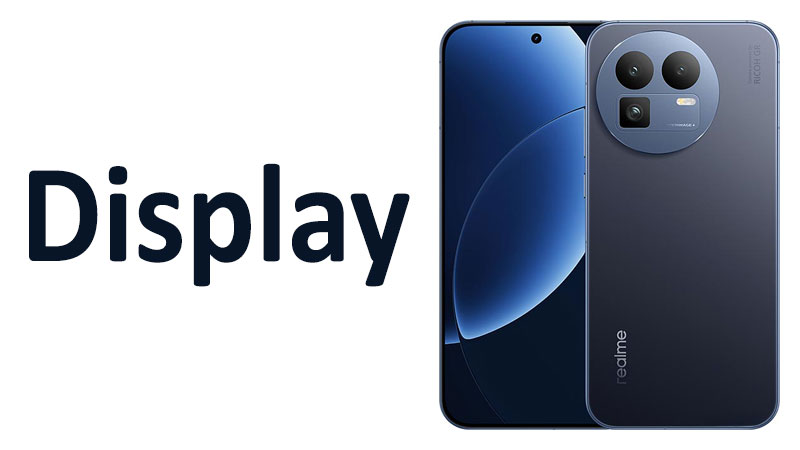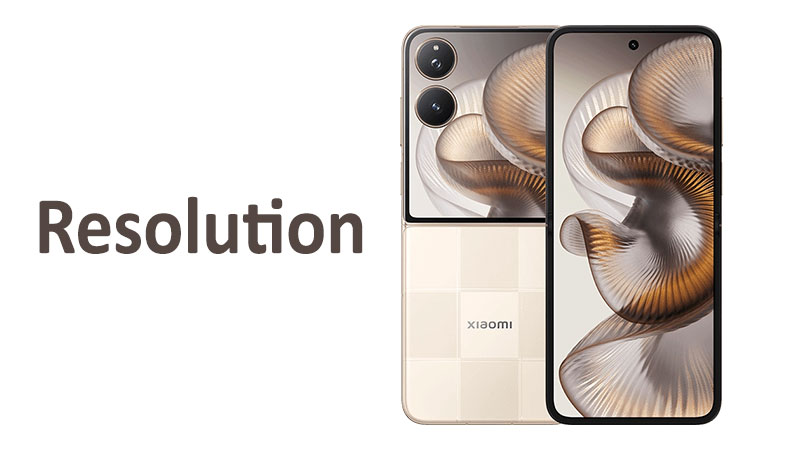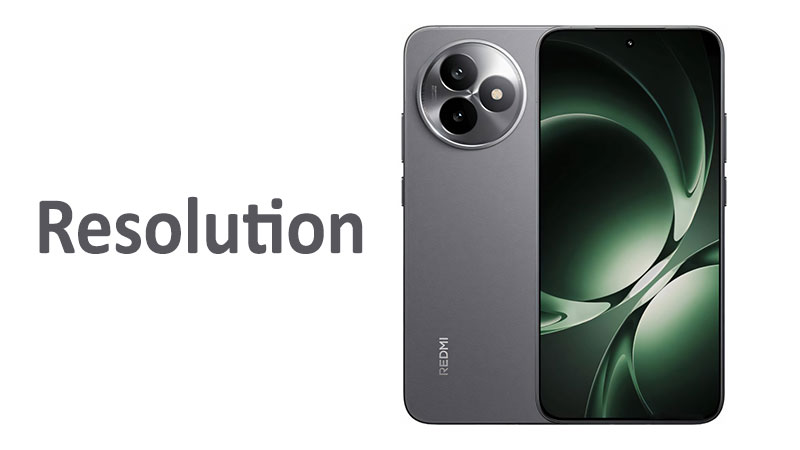The Realme GT 8 display represents a significant leap forward in mobile screen technology. Its sophisticated specifications immediately set a high standard for flagship smartphones. This comprehensive review will dissect the screen’s core components. We will explore its LTPO AMOLED technology and impressive 144Hz refresh rate. We will also analyze the sharp 1440p resolution and extreme brightness levels. Understanding these features is crucial for anyone considering this new device. The display is often the single most important component of a smartphone. Therefore, an in-depth review of the Realme GT 8 screen is essential for prospective buyers.
Unpacking the Core Technology: LTPO AMOLED
The Realme GT 8 utilizes an advanced LTPO AMOLED panel. LTPO stands for Low-Temperature Polycrystalline Oxide. This technology is a game-changer for modern displays. It allows the panel to dynamically adjust its refresh rate. This contrasts sharply with traditional screens. Standard AMOLED panels are restricted to fixed refresh rate settings like 60Hz or 120Hz.
The Benefits of LTPO Technology
LTPO offers a massive advantage in power efficiency. It enables the phone to scale the refresh rate. The rate can drop as low as 1Hz when viewing static content. This might include reading an e-book or looking at the lock screen. Consequently, the display uses significantly less power. This directly translates to longer battery life for the user. High-end displays typically consume a lot of energy. LTPO technology mitigates this drawback effectively.
The screen can instantly ramp up to 144Hz. This happens when the user is scrolling or playing a demanding game. This immediate change ensures maximum fluidity when needed. However, the screen consumes minimal power during idle moments. This intelligent management provides the best of both worlds. The Realme GT 8 offers both stunning visuals and sustained battery performance. This is why LTPO is a key indicator of a premium smartphone.
Comparison to Standard AMOLED
Standard AMOLED displays offer excellent color and contrast. However, they lack the variable refresh rate capability of LTPO. This difference impacts battery consumption greatly. A standard 120Hz AMOLED screen must run at 120Hz continuously. It cannot slow down to 1Hz or 10Hz when the content doesn’t require it. Therefore, LTPO is inherently superior for power management. The Realme GT 8 features the latest generation of this technology. It offers enhanced efficiency over older LTPO versions.
Screen Size, Aspect Ratio, and Immersion
The Realme GT 8 boasts a generously sized 6.79-inch display. This large canvas is perfect for media consumption. Watching movies and playing games becomes a more immersive experience. The display area measures 112.8 cm$^2$. This places it among the largest screens in the flagship category.
Maximizing the Viewing Area
The display features an impressive ~90.7% screen-to-body ratio. This high ratio signifies extremely thin bezels. Minimal bezels create an almost all-screen look. This design choice helps the content fill the user’s entire field of vision. The display virtually melts into the phone’s edges. This engineering detail boosts the overall aesthetic appeal of the device. It also contributes significantly to the feeling of immersion.
The aspect ratio is 19.5:9. This is a tall and cinematic format. It is ideal for modern movie and television content. Furthermore, it provides more vertical space for browsing websites. Users can see more lines of text without constant scrolling. The large size and minimal borders make the Realme GT 8 an excellent device for productivity and entertainment alike.
Resolution Deep Dive: 1440p Sharpness
The Realme GT 8 display sets itself apart with its exceptional resolution. It features 1440 x 3136 pixels. This level of detail is commonly referred to as 1440p or 2K+. This high resolution results in a pixel density of approximately 508 pixels per inch (ppi).
The Impact of High Pixel Density
A 508 ppi density guarantees incredible sharpness and clarity. Individual pixels become virtually invisible to the naked eye. Text appears razor-sharp, much like print on high-quality paper. Detailed graphics and small interface elements are rendered with extreme precision. This eliminates any perceived jagged edges or fuzziness.
The high pixel density is especially important on a large screen. Without sufficient ppi, content on a 6.79-inch display can look stretched or pixelated. The Realme GT 8 successfully avoids this issue. It provides a visual experience that is both expansive and finely detailed. This makes it a treat for design professionals and avid readers.
1440p Versus Standard 1080p
Many competing flagship phones still use 1080 x 2400 (Full HD+ or 1080p) resolution. The difference between 1440p and 1080p is substantial. The Realme GT 8 screen contains roughly 77% more pixels than a typical 1080p display. This higher pixel count translates directly into better image quality.
The clarity is most noticeable when viewing high-resolution images. It is also evident when reading fine text or watching 4K videos. While 1080p is adequate for most tasks, 1440p offers a superior, more refined visual experience. This feature confirms the Realme GT 8’s commitment to high-end display specifications. Users looking for the sharpest screen will appreciate this resolution.
Refresh Rate Revolution: 144Hz Smoothness
A key feature of the Realme GT 8 is its 144Hz refresh rate. The refresh rate indicates how many times the screen updates per second. A higher number means smoother motion. This technology brings a desktop monitor-level experience to a smartphone. It significantly enhances the responsiveness of the device.
Fluidity for Gaming and Scrolling
The jump from 60Hz to 120Hz is immediately noticeable. The transition from 120Hz to 144Hz is more subtle but still significant. This super-high refresh rate is a huge benefit for mobile gaming. Compatible games run incredibly smoothly. This provides a competitive edge and a more satisfying experience. The lower input lag makes the phone feel more responsive.
Everyday scrolling also benefits immensely from 144Hz. Navigating menus, switching between apps, and browsing web pages feels incredibly fluid. The movement of elements across the screen is instantaneous and clean. The responsiveness of the touch interface also feels faster. This buttery-smooth visual feedback contributes to a premium user experience.
Adaptive Control with LTPO
The 144Hz refresh rate is coupled with the LTPO technology. This pairing is crucial for practical use. The screen does not run at 144Hz all the time. It intelligently scales down to 1Hz, 10Hz, 30Hz, 60Hz, 90Hz, or 120Hz. It only hits the maximum 144Hz during intense activity. This dynamic scaling prevents the high refresh rate from draining the battery quickly. The combination ensures the device is smooth when you need it. It is also power-efficient when you don’t.
Peak Brightness Analysis and HDR Capability
The Realme GT 8 display offers exceptional brightness specifications. It supports three distinct brightness levels. These levels cater to different viewing conditions. Understanding these numbers is important for evaluating outdoor performance.
Standard and High Brightness Modes
The typical brightness is rated at 1000 nits (typ). This is a strong baseline for standard indoor use. It ensures excellent visibility in normal lighting conditions. For brighter environments, the display offers High Brightness Mode (HBM). HBM reaches up to 2000 nits. This mode automatically engages when the phone is under direct sunlight. It provides the necessary illumination to keep the screen legible outdoors. HBM is essential for a good user experience on a sunny day.
The Extreme Peak Brightness
The screen also boasts an extreme peak brightness of 7000 nits (peak). This staggering figure does not represent the full-screen brightness. Instead, the 7000-nit peak is achieved for small, focused areas. This occurs when displaying High Dynamic Range (HDR) content. These intensely bright highlights add realism and impact to compatible video content. The 7000 nits ensure HDR videos achieve maximum visual contrast. This is especially true in bright scenes or explosions in a film.
High Dynamic Range (HDR) Support
The display fully supports HDR content. This includes standards like HDR10+ and possibly Dolby Vision. HDR capability means the screen can display a wider range of colors. It also manages a greater difference between the darkest blacks and the brightest whites. This results in more vivid, lifelike images. Videos streaming from services like Netflix or YouTube will look dramatically better. The color depth and contrast create a truly cinematic viewing experience on the phone.
Specialized Comparisons and Competitive Edge
To fully appreciate the Realme GT 8 display, we must compare it with others. We should look at its immediate predecessor and leading competitors. This provides valuable context for the upgrades.
Comparison with the Previous Model (Realme GT 7 – Hypothetical)
The hypothetical Realme GT 7 likely featured a 120Hz refresh rate. Its resolution was probably 1080p. The maximum brightness would have been lower, perhaps around 1500 nits peak. The GT 8 represents a substantial generation-over-generation jump. The move to a 144Hz LTPO panel is the biggest upgrade. It improves both efficiency and smoothness. Furthermore, the shift to 1440p resolution offers significantly sharper images. Buyers upgrading from the GT 7 will notice a massive improvement in clarity and fluidity.
Comparison with Competitors
The Realme GT 8 competes directly with top-tier flagships. These include the Samsung Galaxy S series and devices from other Chinese manufacturers. The 1440p resolution and LTPO 144Hz combination is a powerful pairing. Some competitors offer 120Hz LTPO at 1440p. The Realme GT 8’s 144Hz edge provides a slight advantage in motion fluidity. Furthermore, the extreme 7000-nit peak brightness is highly competitive. It often surpasses the peak HDR capability of many rivals. The display specifications position the GT 8 as a leader in screen technology. It competes on equal footing with the most expensive phones on the market.
Pros and Cons of the Realme GT 8 Display
Every cutting-edge display involves certain design and engineering trade-offs. It is important to look at both the benefits and the drawbacks. A balanced view helps buyers make an informed choice.
Realme GT 8 Display Pros
The list of advantages is extensive and compelling. The LTPO AMOLED panel ensures industry-leading power efficiency. It provides a phenomenal combination of smoothness and battery longevity. The 144Hz refresh rate delivers ultra-fluid motion. This is excellent for high-frame-rate gaming. It also makes everyday use feel incredibly fast and responsive.
The 1440 x 3136 resolution ensures extreme visual sharpness. This results in a superior experience for reading and detailed content. Furthermore, the incredible 7000 nits peak brightness elevates HDR content. It makes movies and shows more vibrant and realistic. The 6.79-inch size with minimal bezels offers an immersive, cinematic viewing area. The display is a clear highlight of the Realme GT 8 device.
Realme GT 8 Display Cons
The exceptional specifications do come with minor drawbacks. The high resolution can be a subtle drain on the battery. Even with LTPO, pushing 1440p at high refresh rates requires considerable power. Users might need to adjust settings for maximum battery life. For instance, they could manually switch to 1080p resolution.
The 7000-nit peak brightness only applies to small areas. It does not represent full-screen output. Some users might expect the entire screen to reach this level. Also, some older games and apps may not support 144Hz. They will default to 120Hz or 60Hz. These are minor limitations. However, they are important to consider for a complete picture.
Important Points for Buyers and Readers
Anyone considering the Realme GT 8 should keep several factors in mind. These points will help you gauge if this display perfectly meets your needs. The screen quality is non-negotiable for many users.
Prioritize Your Use Case
Consider how you primarily use your smartphone. If you are a mobile gamer, the 144Hz refresh rate is a huge benefit. This feature will improve your competitive and casual gaming sessions. If you are a content enthusiast, the 1440p resolution is vital. It will enhance your movie-watching and photo-editing experience. If you frequently use your phone outdoors, the 2000-nit HBM ensures excellent visibility. This display caters to all high-demand use cases exceptionally well.
The Resolution and Refresh Rate Balance
The combination of 1440p and 144Hz is a rare luxury. Many phones compromise by choosing one or the other. The Realme GT 8 offers both simultaneously. This is the definition of a flagship visual experience. Remember that the phone may set the resolution to 1080p by default. This is often done to save battery power. You should check the display settings and ensure the full 1440p resolution is active. Only then will you experience the maximum sharpness.
Display Protection and Durability
While the specifications are impressive, durability is also key. The display glass protection is a crucial factor. Buyers should confirm the exact type of protective glass used. This could be Gorilla Glass Victus or a similar strong material. Strong protection is necessary for a premium screen. This prevents scratches and cracking from accidental drops. Always consider investing in a screen protector for added peace of mind.
Conclusion: A Display that Defines Flagship
The Realme GT 8 display is not just an incremental update. It is a defining feature of the phone. The LTPO AMOLED panel provides a foundation of efficiency and quality. This is then built upon with class-leading specifications. The 144Hz refresh rate offers unmatched smoothness. The 1440 x 3136 resolution ensures crystal-clear images. These features combine to create a truly exceptional viewing experience.
The display excels across all performance metrics. Outdoor visibility is superb thanks to the 2000 nits HBM. HDR content playback is stunning due to the 7000 nits peak brightness. The large 6.79-inch size enhances both work and play. The LTPO technology provides the necessary intelligence. It manages power consumption efficiently without sacrificing performance.
Ultimately, the Realme GT 8 offers one of the best smartphone screens available. The technical specifications speak for themselves. This display alone makes the Realme GT 8 a strong contender. It is an excellent choice for gamers, movie watchers, and power users alike. If display quality is your top priority, this phone is an easy recommendation.
Frequently Asked Questions (FAQ)
What is LTPO technology on the Realme GT 8 display?
LTPO stands for Low-Temperature Polycrystalline Oxide. It allows the screen to change its refresh rate dynamically. This helps to save battery life significantly. The screen can go from 1Hz up to 144Hz almost instantly.
Does the Realme GT 8 screen support 4K resolution?
No, the native resolution of the Realme GT 8 display is 1440 x 3136 pixels. This is commonly referred to as 1440p or 2K+. This resolution is very sharp, offering 508 pixels per inch.
How bright is the Realme GT 8 display for outdoor use?
The screen reaches up to 2000 nits in High Brightness Mode (HBM). This mode activates automatically under direct sunlight. This high level of brightness ensures the display remains easily readable outdoors.
Is the 144Hz refresh rate always active while using the phone?
No. The LTPO technology ensures the 144Hz rate only activates when needed. It is used during gaming or scrolling. It slows down to conserve power when viewing static content like photos.
Does the display support any type of High Dynamic Range (HDR)?
Yes, the Realme GT 8 display supports HDR standards like HDR10+. The screen features an extreme peak brightness of 7000 nits. This capability allows for stunning color and contrast in HDR video content.



